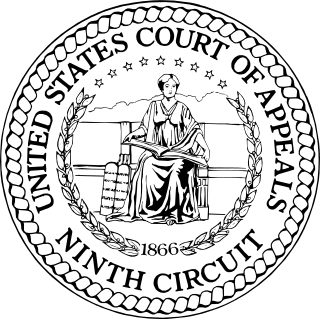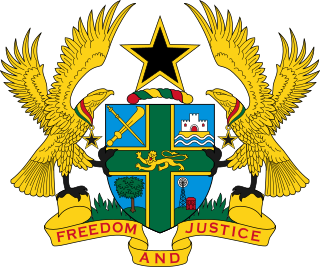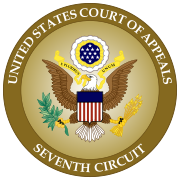
A&M Records, Inc. v. Napster, Inc., 239 F.3d 1004 (2001) was a landmark intellectual property case in which the United States Court of Appeals for the Ninth Circuit affirmed the ruling of the United States District Court for the Northern District of California, holding that defendant, peer-to-peer (P2P) file-sharing service Napster, could be held liable for contributory infringement and vicarious infringement of the plaintiffs' copyrights. This was the first major case to address the application of copyright laws to peer-to-peer file-sharing.
International News Service v. Associated Press, 248 U.S. 215 (1918), also known as INS v. AP or simply the INS case, is a 1918 decision of the United States Supreme Court that enunciated the misappropriation doctrine of federal intellectual property common law—that a "quasi-property right" may be created against others by one's investment of effort and money in an intangible thing, such as information or a design. The doctrine is highly controversial and criticized by many legal scholars, but it has its supporters.

Computer Associates International, Inc. v. Altai, Inc., 982 F.2d 693 is a decision from the United States Court of Appeals for the Second Circuit that addressed to what extent non-literal elements of software are protected by copyright law. The court used and recommended a three-step process called the Abstraction-Filtration-Comparison test. The case was an appeal from the United States District Court for the Eastern District of New York in which the district court found that defendant Altai's OSCAR 3.4 computer program had infringed plaintiff Computer Associates' copyrighted computer program entitled CA-SCHEDULER. The district court also found that Altai's OSCAR 3.5 program was not substantially similar to a portion of CA-SCHEDULER called ADAPTER, and thus denied relief as to OSCAR 3.5. Finally, the district court concluded that Computer Associate's state law trade secret misappropriation claim against Altai was preempted by the federal Copyright Act. The appeal was heard by Judges Frank X. Altimari, John Daniel Mahoney, and John M. Walker, Jr. The majority opinion was written by Judge Walker. Judge Altimari concurred in part and dissented in part. The Second Circuit affirmed the district court's ruling as to copyright infringement, but vacated and remanded its holding on trade secret preemption.

Allen Taflove is a full professor in the Department of Electrical and Computer Engineering of Northwestern's McCormick School of Engineering, since 1988. Since 1972, he has pioneered basic theoretical approaches, numerical algorithms, and applications of finite-difference time-domain (FDTD) computational solutions of Maxwell's equations. He coined the descriptors "finite difference time domain" and "FDTD" in the 1980 paper, "Application of the finite-difference time-domain method to sinusoidal steady-state electromagnetic penetration problems," In 1990, he was the first person to be named a Fellow of the Institute of Electrical and Electronics Engineers (IEEE) in the FDTD area. Prof. Taflove is the recipient of the 2014 IEEE Electromagnetics Award with the following citation: "For contributions to the development and application of finite-difference time-domain (FDTD) solutions of Maxwell's equations across the electromagnetic spectrum." He is currently a Life Fellow of the IEEE and a Fellow of the Optical Society (OSA). His OSA Fellow citation reads: "For creating the finite-difference time-domain method for the numerical solution of Maxwell's equations, with crucial application to the growth and current state of the field of photonics."
Fogerty v. Fantasy, Inc., 510 U.S. 517 (1994), was a United States Supreme Court case that addressed the standards governing awards of attorneys' fees in copyright cases. The Copyright Act of 1976 authorizes, but does not require, the court to award attorneys' fees to "the prevailing party" in a copyright action. In Fogerty, the Court held that such attorneys'-fees awards are discretionary, and that the same standards should be applied in the case of a prevailing plaintiff and a prevailing defendant.

Castle Rock Entertainment Inc. v. Carol Publishing Group, 150 F.3d 132, was a U.S. copyright infringement case involving the popular American sitcom Seinfeld. Some U.S. copyright law courses use the case to illustrate modern application of the fair use doctrine. The United States Court of Appeals for the Second Circuit upheld a lower court's summary judgment that the defendant had committed copyright infringement. The decision is noteworthy for classifying Seinfeld trivia not as unprotected facts, but as protectable expression. The court also rejected the defendant's fair use defense finding that any transformative purpose possessed in the derivative work was "slight to non-existent" under the Supreme Court ruling in Campbell v. Acuff-Rose Music, Inc., 510 U.S. 569 (1994).

Jacobsen v. Katzer was a lawsuit between Robert Jacobsen (plaintiff) and Matthew Katzer (defendant), filed March 13, 2006 in the United States District Court for the Northern District of California. The case addressed claims on copyright, patent invalidity, cybersquatting, and Digital Millennium Copyright Act issues arising from Jacobsen under an open source license developing control software for model trains.
The copyright law of the United States grants monopoly protection for "original works of authorship". With the stated purpose to promote art and culture, copyright law assigns a set of exclusive rights to authors: to make and sell copies of their works, to create derivative works, and to perform or display their works publicly. These exclusive rights are subject to a time limit, and generally expire 70 years after the author's death. In the United States, any work published before January 1, 1925, is generally considered public domain.

Religious Technology Center v. Netcom On-Line Communication Services, Inc., 907 F. Supp. 1361, is a U.S. district court case about whether the operator of a computer bulletin board service ("BBS") and Internet access provider that allows that BBS to reach the Internet should be liable for copyright infringement committed by a subscriber of the BBS. The plaintiff Religious Technology Center ("RTC") argued that defendant Netcom was directly, contributorily, and vicariously liable for copyright infringement. Netcom moved for summary judgment, disputing RTC's claims and raising a First Amendment argument and a fair use defense. The district court of the Northern District of California concluded that RTC's claims of direct and vicarious infringement failed, but genuine issues of fact precluded summary judgment on contributory liability and fair use.

Perfect 10, Inc. v. CCBill LLC, 488 F.3d 1102, is a U.S. court case between a publisher of an adult entertainment magazine and the webhosting, connectivity, and payment service companies. The plaintiff Perfect 10 asserted that defendants CCBill and CWIE violated copyright, trademark, and state law violation of right of publicity laws, unfair competition, false and misleading advertising by providing services to websites that posted images stolen from Perfect 10's magazine and website. Defendants sought to invoke statutory safe harbor exemptions from copyright infringement liability under the Digital Millennium Copyright Act, 17 U.S.C. § 512, and from liability for state law unfair competition, false advertising claims and right of publicity based on Section 230 of the Communications Decency Act, 47 U.S.C. § 230(c)(1).

Facebook, Inc. v. Power Ventures, Inc. is a lawsuit brought by Facebook in the United States District Court for the Northern District of California alleging that Power Ventures Inc., a third-party platform, collected user information from Facebook and displayed it on their own website. Facebook claimed violations of the CAN-SPAM Act, the Computer Fraud and Abuse Act ("CFAA"), and the California Comprehensive Computer Data Access and Fraud Act. According to Facebook, Power Ventures Inc. made copies of Facebook's website during the process of extracting user information. Facebook argued that this process causes both direct and indirect copyright infringement. In addition, Facebook alleged this process constitutes a violation of the Digital Millennium Copyright Act ("DMCA"). Finally, Facebook also asserted claims of both state and federal trademark infringement, as well as a claim under California's Unfair Competition Law ("UCL").

Facebook, Inc. v. StudiVZ Ltd. was a federal lawsuit filed on July 18, 2008, by Facebook, Inc. in the United States District Court for the Northern District of California against StudiVZ Ltd., a UK company with its principal place of business in Germany. StudiVZ had launched a website which was alleged to be visually and functionally similar to Facebook's site. Facebook filed a similar lawsuit the same day in the German regional court of Stuttgart and an additional related lawsuit on November 19, 2008, in the German regional court of Cologne. In May 2009 the District Court in California issued an order indicating its view that Germany was the more appropriate forum for the dispute, but withheld issuing a final order on the question until further review of the issues of personal jurisdiction could be addressed. The parties subsequently settled the California case, but continued the litigation in Germany in which the regional court of Cologne held that StudiVZ did not violate any intellectual property rights held by Facebook.

1-800 CONTACTS v. WhenU.com was a legal dispute beginning in 2002 over pop-up advertisements. It was brought by 1-800 Contacts, an online distributor of various brands of contact lenses against WhenU SaveNow, a maker of advertising software. The suit also named Vision Direct, one of WhenU advertising customers, as a co-defendant. 1-800 CONTACTS alleged that the advertisements provided by WhenU, which advertised competitors of 1-800 CONTACTS when people viewed the company's web site, were "inherently deceptive" and that one of the advertisements "misleads users into falsely believing the pop-up advertisements supplied by WhenU.com are in actuality advertisements authorized by and originating with the underlying Web site".

National Basketball Association v. Motorola, 105 F.3d 841 is a United States Court of Appeals for the Second Circuit case in which the National Basketball Association (NBA) purported that Motorola and STATS infringed the NBA's copyright on the broadcast of games and misappropriated the data presented on the SportsTrax pager.

Ouellette v. Viacom, No. 9:10-cv-00133; 2011 WL 1882780, found the safe harbor provision of the Digital Millennium Copyright Act (DMCA) did not create liability for service providers that take down non-infringing works. This case limited the claims that can be filed against service providers by establishing immunity for service providers' takedown of fair use material, at least from grounds under the DMCA. The court left open whether another "independent basis of liability" could serve as legal grounds for an inappropriate takedown. Thus, service providers can rest easier knowing that they do not have to do a fair use analysis of content suspected of infringing copyright.

Barclays Capital Inc. v. Theflyonthewall.com, Inc., 650 F.3d 876, was a case decided in the United States Court of Appeals for the Second Circuit where the Second Circuit, reversing the decision of the US District Court below it, found that the claims of three major financial investment firms against an internet subscription stock news service (theflyonthewall.com) for "Hot-news" Misappropriation under state common law doctrine could not stand, as they were pre-empted by several sections of the Federal Copyright Act.
The misappropriation doctrine is a U.S. legal theory conferring a "quasi-property right" on a person who invests "labor, skill, and money" to create an intangible asset. The right operates against another person "endeavoring to reap where it has not sown" by "misappropriating" the value of the asset. The quoted language and the legal principle come from the decision of the United States Supreme Court in International News Service v. Associated Press, 248 U.S. 215 (1918), also known as INS v. AP or simply the INS case.

Warner Bros. Inc. v. American Broadcasting Companies, Inc., 720 F.2d 231, the case of Superman v. The Greatest American Hero, is the third case in a Second Circuit trilogy of 20th century copyright infringement cases in which the proprietors of Superman copyrights sued other companies for publishing fictional exploits of a cape-wearing superhero. Although the plaintiffs were successful in the first two cases, Superman v. Wonderman and Superman v. Captain Marvel, they were completely unsuccessful in Superman v. The Greatest American Hero. The court held that "as a matter of law. .. 'The Greatest American Hero' is not sufficiently similar to the fictional character Superman, the hero of comic books, television, and more recently films, so that claims of copyright infringement and unfair competition may be dismissed without consideration by a jury."

Paul Oliver v. Samuel K. Boateng was a ground-breaking case concerning copyright law in Ghana by the High Court of Justice. It reaffirmed the laws of Copyright relating to the requirements of copyright protection and also, the law relating to authorship in Ghana. This case elaborated the fact that the law of Copyright in Ghana is a creature of Statute and setting out some major general principles in Copyright Law in Ghana. The facts involved Mr. Paul Oliver, a programmer, who claimed ownership of Copyright in two versions of a Rural Banking software called Rural Banker and E- finance respectively. Paul Oliver sued Samuel Boateng and the second defendant Victor Gbehodor for licensing his software to other rural banks without his permission. The court in this case, Fundamentally, relying heavily on Statute, which in this case was the Copyright Act, 2005 emphasized how statute dependent the Law of Copyright in Ghana is. The case also made reference to the various subject matter that are not Copyright-able in Ghana throwing a specific light on Ideas.it made it clear that a person who expresses the idea in a concrete form will rather be the Author of a work. Also, this case made some decisions regarding may be referred to as a joint Author and also threw some light on Infringement of Copyright, Damages and also highlighted the existence of idea/expression merger scenarios.
Pearson Education Limited v Morgan Adzei is one of the novel Ghanaian cases that discusses the extent of application and protection under the Copyright Act of Ghana, Act 690. The primary focus of this case is on the works excluded from copyright eligibility under section 2 of the Copyright Act, Act 690.






